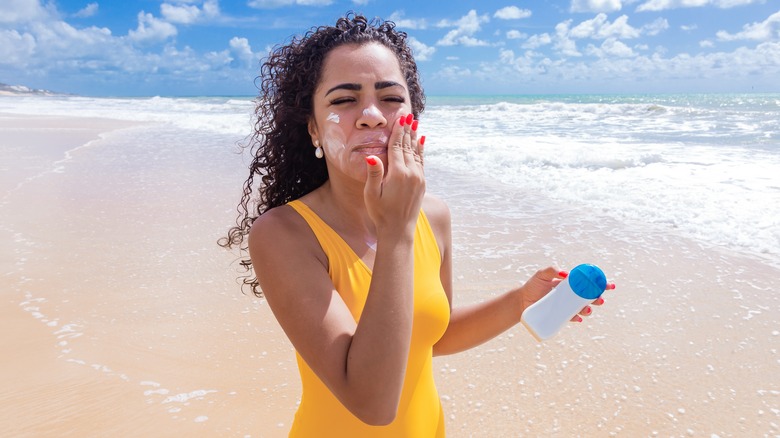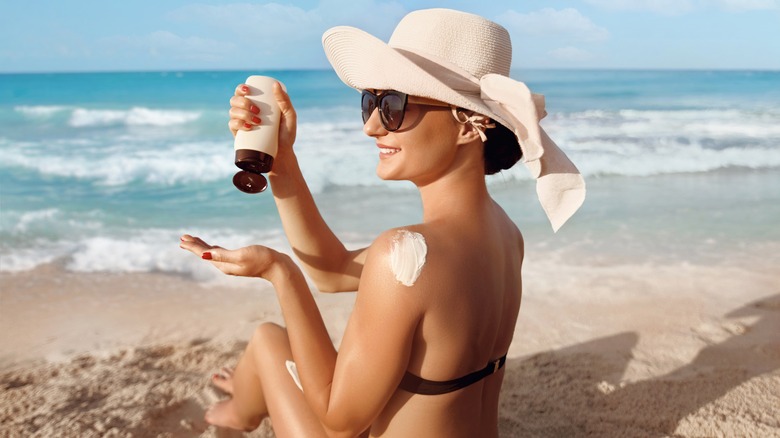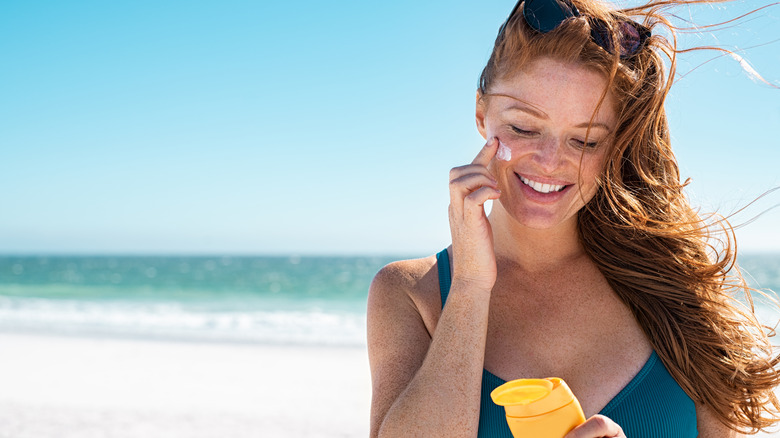What It Means If A Sunscreen Is Reef-Safe & How To Tell If Your Fave Product Is
Everyone needs to wear sunscreen, especially if they're at the pool or beach. Although, when you go swimming in the ocean with chemical sunscreen, the sunscreen actually harms marine life while protecting you. Reef-safe SPF is necessary to prevent the active ingredients in your product from killing coral and fish. You can't avoid wearing sunscreen, but you can make informed choices that are better for your health and the environment.
SPF does more than protect you from sunburn and premature aging. More importantly, it lowers the risk of developing skin cancer. You don't need to have a light complexion or mature skin to benefit from using sunscreen. Where you are also doesn't change if you can skip this step in your daily routine. You must shield your skin from the sun even if you're not at the beach. Your best choice is a broad-spectrum sunscreen that protects you from UVA and UVB rays and has an SPF of 50 or more. When it's time to apply it, you should follow the teaspoon rule. This is where you use about 1 teaspoon for your face and neck, 2 for your chest and back, 1 for each arm, and 2 for each leg. Don't forget about your lips either by swiping on a balm with an SPF of 30 or more. Before you can wear your sunscreen, you need to know how to find a reef-friendly formula and why it matters even when you're not going in the ocean.
The active ingredients in chemical sunscreens are harmful to coral reefs
It's necessary to wear sunscreen at the beach to protect your skin, but you need to be careful with which one you use. When you have sunscreen on and swim in the ocean, some of it comes off in the water, which affects marine life. Using an SPF that isn't reef-safe can harm the tissue of many different animals. It kills coral reefs and causes defects in mussels, fish, sea urchins, and dolphins (via National Oceanic and Atmospheric Administration). You don't even have to be at the beach for these chemicals to kill coral reefs. Showering after wearing SPF will send it into the ocean through the waterways.
When sunscreen is labeled reef-safe, it means that it doesn't use active ingredients that are harmful to coral and other marine life. Instead, it will contain non-nanoparticle minerals like zinc oxide and titanium dioxide to block UV rays. These sunscreens are just as effective as standard chemical versions without hurting the ocean.
Always read the label
Simply purchasing any sunscreen that has reef-safe on the label won't ensure that it doesn't contain dangerous chemicals. The term reef-safe or reef-friendly isn't regulated, so any company can claim that their product is okay for the ocean without proving it actually is. Unfortunately, this means you'll have to read the ingredients list before buying sunscreen. When you flip the bottle over, you should look at the active ingredients.
It's best to stay away from all chemical-based SPF. They use active ingredients like oxybenzone, octinoxate, octocrylene, 4-methylbenzylidene camphor, PABA, parabens, and triclosan (via National Oceanic and Atmospheric Administration). These are the dangerous chemicals that will kill marine life. If a reef-friendly sunscreen contains these active ingredients, it is, in fact, not safe. These SPFs can even include chemicals that are harmful to people that the FDA is currently working on banning. To protect your health, you should never use a product with avobenzone, octisalate, or homosalate (via Environmental Working Group). In addition, not all mineral sunscreens are equal, depending on the particle size of their active ingredients. You should look on the label for non-nano particles since the smaller they are, the less toxic they will be to you and the environment.


